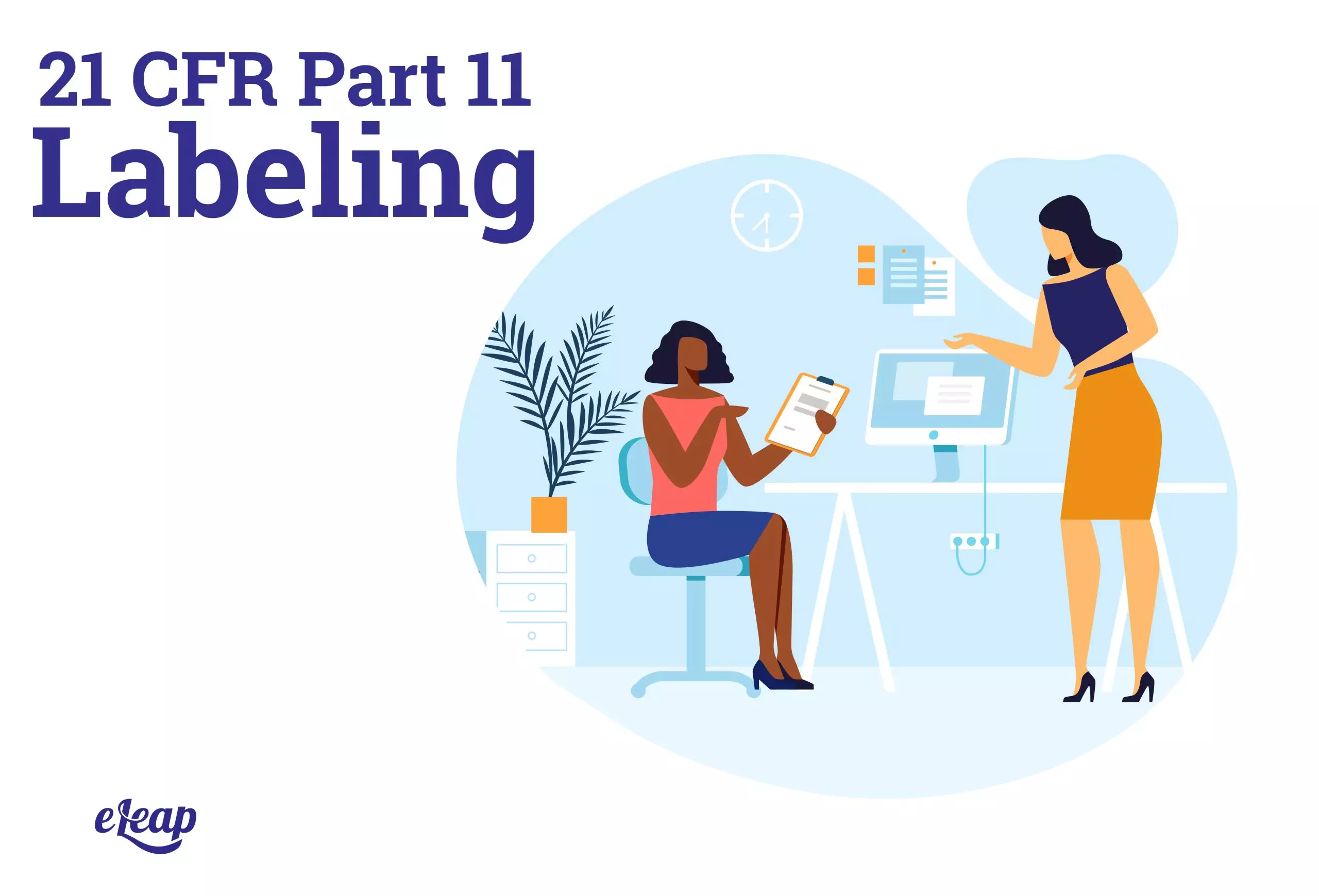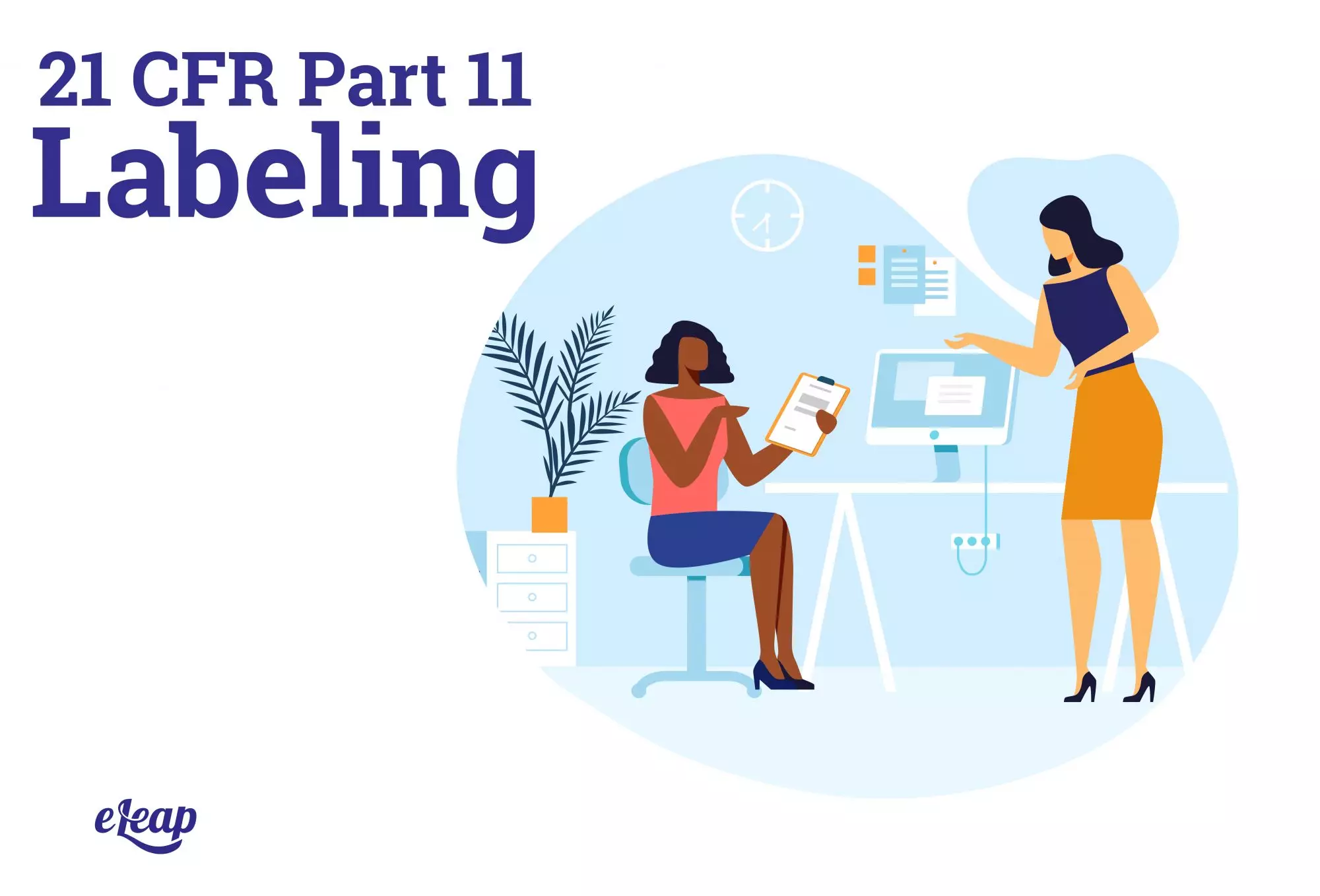21 CFR Part 11 Labeling
Complying with the FDA’s Labelling Rules May Be Simpler Than You Think

Life science companies, including pharmaceutical companies, biotech firms, and medical device manufacturers, are required to comply with 21 CFR Part 11. It’s a wide-ranging, complex set of regulations that deal specifically with electronic records and electronic signatures. Because digital records and digital credentials are used in almost every area of your business today, those regulations impact just about everything, including product labeling.

What Is the 21 CFR Part 11 Labeling Rule?
There is no 21 CFR Part 11 labeling rule – the rule itself is specific to electronic records and electronic signatures. It ties into labeling rules (21 CFR Part 201 and 21 CFR Part 211) that spell out exactly what companies that fall under FDA oversight must due in terms of labeling when it comes to pharmaceuticals and related products (such as sunscreen and OTC medications).
The basic gist here is that drug and medical device manufacturers, as well as all other companies under the FDA’s purview, preserve records of all the systems that are used in the production process. Obviously, that’s a significant number of systems, particularly when it comes to larger companies, and it can even include things like your barcode labeling system.
Labels with Electronic Signatures
The most direct connection between 21 CFR Part 11 and labeling rules is the mandate that labels be connected to an organization, manufacturer, or issuer through an electronic signature.
What is an electronic signature? 21 CFR Part 11 defines an electronic signature as, “(a) Electronic signatures that are not based upon biometrics shall:
(1) Employ at least two distinct identification components such as an identification code and password.
(i) When an individual executes a series of signings during a single, continuous period of controlled system access, the first signing shall be executed using all electronic signature components; subsequent signings shall be executed using at least one electronic signature component that is only executable by, and designed to be used only by, the individual.
(ii) When an individual executes one or more signings not performed during a single, continuous period of controlled system access, each signing shall be executed using all of the electronic signature components.
(2) Be used only by their genuine owners; and
(3) Be administered and executed to ensure that attempted use of an individual’s electronic signature by anyone other than its genuine owner requires the collaboration of two or more individuals.
(b) Electronic signatures based upon biometrics shall be designed to ensure that they cannot be used by anyone other than their genuine owners.”
How Can an LMS Help?
While a learning management system cannot automatically ensure that you’re in compliance with the FDA’s labeling requirements, it can offer a wide range of benefits in terms of training and education.
- FDA Labeling Rule Education – Perhaps the most important step toward compliance with 21 CFR Part 11 and labeling compliance is educating your employees. 21 CFR (all parts) is a complex set of federal rules and regulations that spans thousands of pages. With the right LMS, you can use existing learning modules to train your employees or create your own custom learning content specific to your business, industry, or processes.
- Track Learner Progress – Failure to comply with either the FDA’s labeling requirements or 21 CFR Part 11 can result in being audited by an FDA inspector or inspection team. Often, learning/training records are the place they begin. With the right learning management system, you can track learner progress and ensure that all of your records are complete and up to date and that they’re accessible for FDA inspectors in the format they demand.
- A Step toward Part 11 Compliance – With the right learning management system, your organization will be one step closer to full compliance with 21 CFR Part 11. Again, this deals with electronic record storage, access, and security, as well as with electronic signatures. The right LMS will provide you with not just training for employees related to the FDA’s labeling rules, as well as Part 11 requirements, but will be compliant with Part 11 itself.
How to Choose the Right LMS
With so many learning management systems on the market, how do you ensure that you’re choosing the right system for your medical device or pharmaceutical company? It can be pretty challenging, but the following list will help:
- Is it validated for 21 CFR Part 11? If not, how much time and effort will you need to spend validating it?
- Does the LMS offer the ability to access lessons, modules, and other data remotely from mobile devices? Does it comply with the rules in 21 CFR Part 11 in terms of electronic signatures?
- Does the LMS support authoring your own learning-related content, or are you stuck with what’s available from the vendor?
- Does the LMS align with your learning and development objectives? Will it help get your learners from where they are now in their journey to where they need to be?
- Is the LMS cloud-based? If not, do you have the in-house talent and resources required? Would a cloud-based LMS be better suited, freeing your IT team to focus on more important tasks?
- Is the LMS constantly updated to ensure compliance with changing rules and industry regulations, including future 21 CFR Part 11 and labeling rules?
- Does the LMS offer granular data tracking so that you can monitor learner progress, ensure information security, and limit access to data for unauthorized users?
These are just a few of the questions you’ll need to answer when choosing your learning management system. The right choice will give you a valuable asset that will support positive outcomes for your employees for years to come while also helping you comply with federal regulations.
Contact eLeaP for more information about how our system can fit your needs and to schedule a custom consultation.